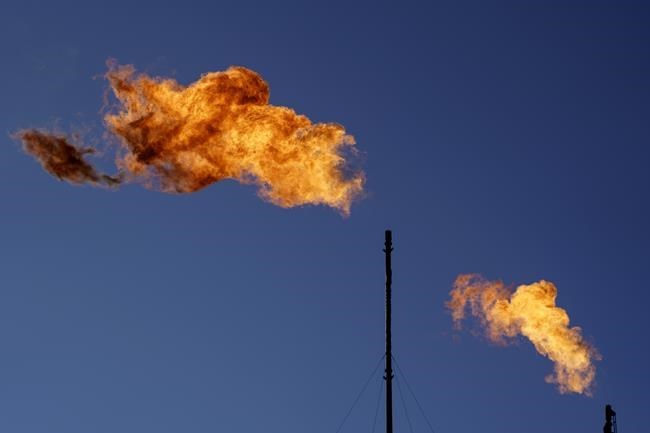Emissions of a potent greenhouse gas from Alberta's energy industry are underestimated by nearly 50 per cent, according to a new study from one of sa���ʴ�ý's premier climate labs.
The study from Carleton University's Energy and Emissions Research Lab also says oil and gas produced in the province emit significantly more methane for the energy produced than jurisdictions such as British Columbia — a measurement that offers a warning to industry, said lead author Matthew Johnson.
"The future is, your ability to sell (gas) into certain markets will be based on methane intensity," he said.
Johnson's lab, which published its latest paper in the journal Nature Communications Earth and Environment, combined several different measuring methods for methane, a greenhouse gas considered to be about 80 times more potent than carbon dioxide in the first 20 years after its release.
In methods published and praised in the scientific literature and now in use by the United Nations Environment Program, the team measured emissions at surface level, from a plane and from satellite data. It's the first time so-called "bottom-up" methods — which depend on ground-based measurements and estimates and is used by industry — have been combined with "top-down" methods from above.
The team looked at 3,500 different oil and gas facilities and 5,600 wells.
It concluded official government and industry estimates of methane emissions from Alberta's oilpatch are 50 per cent too low.
"It's quite a different picture," said Johnson.
In 2021, Alberta's methane emissions were officially estimated to equal 15 megatonnes of carbon dioxide a year. That adds up to the yearly emissions of three million cars, according to the U.S. Environmental Protection Agency.
If Johnson's paper is right, the correct equivalent for Alberta's emissions would be closer to 4.5 million cars.
The paper also concludes that the methane is coming from significantly different sources than government and industry think it is. Venting from tanks accounts for about a quarter of such emissions, instead of the three per cent that official sources say.
Knowing where the gas is coming from is key to stopping its escape, Johnson said.
Johnson said Environment and Climate Change sa���ʴ�ý is currently re-evaluating its methane statistics in light of work from his lab, which has published a series of papers that throw doubt on official numbers. The lab has concluded methane emissions are also underestimated in Saskatchewan and British Columbia.
"Bottom-up estimates are wrong everywhere," he said.
Lisa Baiton, president of the Canadian Association of Petroleum Producers, said her group is examining the Carleton paper.
"There are multiple methodologies to estimate industry’s methane emissions including various academic, provincial and national inventories, each with their own assumptions and strengths," she said in an email.
Renato Gandia, spokesman for the Alberta Energy Regulator, said the official estimates reflect the best available data.
"The (regulator) continues to look for ways to work with other jurisdictions and regulated operators to improve data quality," he said.
Baiton said industry is on track to reduce methane emissions by up to 45 per cent by 2025. Gandia said the government and the regulator are currently looking for ways to reduce methane emissions by up to 80 per cent.
But Johnson said those figures don't mean much since the baseline number is likely a large underestimate.
"Maybe Alberta's reduced, maybe they haven't. We'll never know because we don't know what emissions were in 2012."
The important number, he said, is the amount of methane released for every amount of energy produced. Jurisdictions such as the European Union and the United States are already considering imposing limits for methane intensity on gas imports.
On average, said Johnson, Alberta oil and gas producers see about 1.7 per cent of produced methane escape into the atmosphere. That's higher than most U.S. basins and four times the rate of methane emissions in British Columbia.
"It doesn't matter if Alberta has come down 45 per cent," said Johnson. "The real target is 0.2 percent (methane leakage) and nobody's there."
Better is possible, he said. The study compared anonymous individual sites and found some had only a tenth of the methane intensity of other similar sites.
"There are some operators who are doing it," Johnson said. "It shows it can be done."
Ottawa is finalizing regulations on methane emissions. The response of Alberta's oil and gas sector — responsible for about one-quarter of all the methane released in sa���ʴ�ý — will be crucial to meeting the country's climate change commitments.
Accurate measurement of methane emissions and pinpointing their sources is crucial to keeping them out of the atmosphere and contributing to climate change, said Johnson.
"There's all kinds of data here the government can mine," he said. "(Emissions targets) for 2030 are entirely doable, but only if we commit to measuring and tracking our progress."
This report by The Canadian Press was first published Nov. 17, 2023.
Bob Weber, The Canadian Press



